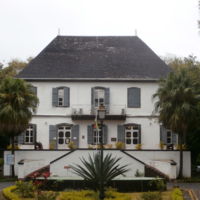
National History Museum
The National History Museum of Mauritius opened in 1948. It is housed in an French colonial villa built in 1772 that was formerly used as a military hospital, a naval museum and the Museum of Historical Souvenirs. It is managed by the Mauritius Museums Council, under the governance of the Ministry of Arts and Culture. The museum explores the social and cultural history of Mauritius; from its discovery by the Portuguese at the start of the sixteenth century, through its successive colonisations by the Dutch, French and British, up to the end of the nineteenth century.
The first floor of the museum exhibits the Dutch, French and Anglo-French wars. Each room explores a different era with artefacts from the period; these range from furniture and decorative arts to weapons, maritime equipment and ceramics.
On the second floor of the museum there is an exhibition dedicated to the British rule of Mauritius, from 1810 until 1968. The interpretation examines the transformation of Mauritius from a maritime economy to an agricultural one, with a key focus on the production of sugar. Alongside this is a discussion of the use of slavery and the development of the slave trade, indentured labour and Indian immigration. Artefacts here include agricultural tools, paintings and drawings depicting the changing landscape and the workforce, and archival documents.
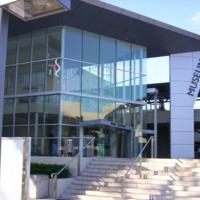
Queensland Museum
The Queensland Museum is a museum of natural history, science, human achievement and local interest that was founded by the Queensland Philosophical Society in 1862. Over the last century it has been housed in various sites, namely former colonial administrative buildings, until the local government had a purpose built site constructed for the museum on Brisbane's South Bank in 1986. Funded by the Queensland Government, the Queensland Museum Trust operates a number of sites in addition to the Queensland Museum. These include the Science Centre, the Queensland Museum of Tropics and the Workshops Rail Museum.
The museum's aim is to connect its visitors to Queensland the place, the people and the region's position in the world through artefacts, interactives and events. There are over one million items in its collections. The permanent exhibitions look at Queensland's ecological and social development.
In 'Histories of Queensland,' the exhibition explores the theme of migration to the area. As well as examining the European migration to the area during the eighteenth and nineteenth centuries, the displays discuss the role of indentured labourers from the South Sea Islands. These people were forcibly transported from their homes to work in Queensland's sugar industry. The display informs visitors about the hardships faced by these individuals and the negative legacies this brutal enslavement inflicted on the South Sea Islands from the nineteenth century until today.
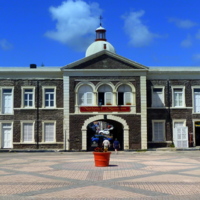
The National Museum of St Kitts
The National Museum of St Kitts is housed in the Old Treasury Building, built by the British colonial administration in 1894 and known as the 'gateway to Basseterre' due to its imposing size. The museum opened in 2002 and charts the history of St Kitts from its earliest, indigenous populations to its independence from colonial rule in 1983.
The museum has three permanent galleries which cover St Kitts' history in a chronological timeline making use of a small collection of artefacts, alongside images and text panels. The first gallery examines the indigenous populations of the island, alongside exhibits relating to natural history and ecology.
The second gallery explores the arrival of Europeans to the island and the development of slavery and the plantation economy. There are artefacts showcasing the brutal nature of enslavement, including an iron slave collar. It also explains the processes involved in the cultivation of sugar, as used on the plantations during the eighteenth and nineteenth centuries. It also provides a narrative of abolition and emancipation.
The final gallery examines the colonial governance of St Kitts post emancipation, through to independence from British rule in 1983.
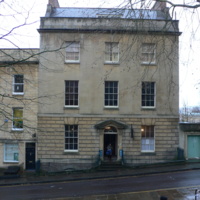
The Georgian House
The Georgian House was built in around 1790 for a plantation owner and sugar merchant named John Pinney (1740-1818), who settled in Bristol when he left Nevis. Two black servants, one bought as a child, the other born on Pinney’s Nevis plantation, also lived and worked in the house: Pero Jones (c.1753-1793) and Fanny Coker (1767-1820). Fanny had been given her freedom at the age of 11, Pero remained enslaved.
The House was presented to the city in 1937 and Bristol City Council has operated the site as a period-house museum since 1939. Rooms are open to visitors across four floors, and it is divided into life above and below stairs. Life above stairs features rooms such as the Dining Room and Drawing Room across the upper three floors, while life below stairs has the kitchen and housekeeper’s rooms in the basement. Information cards provide details about the objects within the rooms including furniture and paintings, and some information on the people who lived there. It is located in central Bristol near the University and Cathedral.
On the second floor there is a small 2D exhibition, in a room next to the bedroom, giving information on the family, the Nevis plantations, and the black servants. Panels have been present in the room since the 1990s, but they were updated and re-installed in April 2018. A large board features the names of the known enslaved people on the Pinney plantations over 200 odd years, and a graphics panel covers nine topics including Bristol and Slavery, John Pinney, Pero Jones, Fanny Coker, Hard Labour and Resistance. They connect the site, and city, to Transatlantic Slavery, through the stories of individual people.
In addition to this display there are implicit and explicit references to slavery throughout the house. Slavery is included on the introductory board and first information card on John Pinney. There are also objects, particularly downstairs, including a sugar cone in the larder and a newspaper discussing the slave trade on the kitchen table. Further audio and information is planned to be added at the house, which will tell more about the slavery connections of the family and house.
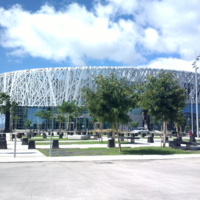
Memorial ACTe
On the former site of a sugar factory, Guadelopue's Memorial ACTe stands as a cultural institution that aims to preserve the memory of those who suffered during slavery, as well as to act as a space for discussion on the continuing repercussions. Part of UNESCO's Slave Route project, its main focus is on the challenges of bondage in the Guadeloupe islands. Memorial ACTe was opened in 2015 by then French President, Francois Hollande, and nineteen other heads of state.
The Memorial ACTe is a unique museum, both internally and externally, through its architectural design. It is also a centre for live arts and debates. It aims to provide interpretation through a variety of viewpoints and disciplines, using not only history but ethnology, social anthropology and history of art as well. The history of slavery and the slave trade are explored through a range of archival material, images and artefacts, with visual and audio installations too.
The permanent exhibition space examines the history of slavery from antiquity to the present day, using objects, reconstructions, visual and audio installations and digital interactives. The temporary exhibition space focusses on contemporary forms of artistic expression in relation to slavery around the world. In addition, there is a research centre where visitors can look into their genealogy, as well as a library and a conference hall.
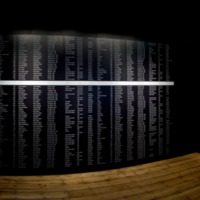
Museum of London Docklands
The Museum of London Docklands houses the Port and River collections of the Museum of London. The aim of these museums is to showcase the growth and development of London, from the Roman era through to the present day. In a period of expansion for the Museum of London, the Museum of London Docklands was opened in 2003 in a Grade I listed warehouse on West India Quay, the historic trading heart of London.
Due to its location in a warehouse which would very likely have stored sugar, and other slave-produced items, the history of the transatlantic slave trade and its impact on London fits well within this space. ‘London, Sugar and Slavery’ was originally produced in 2007 as part of the bicentenary commemorations but has since become a permanent part of the museum. The displays have a local focus, supported through a wide range of objects, and consider the impact of the slave trade on London historically and today.
On entering the gallery visitors are met with a list of ships that traded slaves from the West India Quay- placing them right there in the story. Next there are discussions of the economics of slavery, and indications of how the money made from it changed the city of London forever. The exhibition also includes discussions of resistance, and abolition- centring the movement on the mass movement in the wider population with a case entitled ‘Abolition on the Streets.’ To bring the display up to date there is a discussion of representations of black people in popular culture, with objects including children’s books, film memorabilia, toys and prints, in line with a further piece on racism in London.
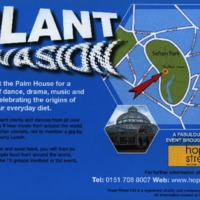
Plant Invasion
Plant Invasion was a family event of dance, drama, music and design, celebrating the diverse origins of food in everyday diets. The project looked at the origins of tea, and at the trade routes through Liverpool associated with sugar, coffee, tobacco, rice, cotton and enslaved peoples. The festival was organised by the Liverpool charity Hope Street Ltd, and took place at the Palm House in Liverpool's Sefton Park. Fifteen community groups prepared performances and displays based on their investigations into the journeys of non-indigenous plants and the routes they took in arriving in the UK.
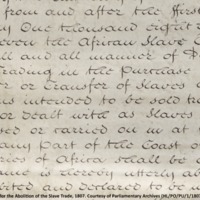
For Love of Sugar
Commissioned by 2007's City of London Festival, artist Satch Hoyt created several sculptures made only of sugar. In St Paul's Cathedral, life-sized portraits of influential black figures - including Olaudah Equiano, Ignatius Sancho and Mary Seacole - were made of painted sugar cubes. Hoyt also created two slave ships from sugar, displayed at Museum of London Docklands.
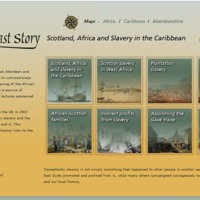
A North East Story: Scotland, Africa and Slavery in the Caribbean
This online exhibition and learning resource linking the history of transatlantic slavery to North East Scotland was organised by an Aberdeen and Aberdeenshire Bicentenary Committee, including representatives from Aberdeenshire Council, Aberdeen City Council, the University of Aberdeen, the Robert Gordon University and the African and African-Caribbean communities. It followed on from a service of commemoration and a series of public lectures sponsored by the Committee in 2007. The exhibition logo is inspired by the mythical Sankofa bird, a cultural symbol of the Akan-speaking peoples of Ghana in West Africa. Featured here are a number of resources available to download from the North East Story website.
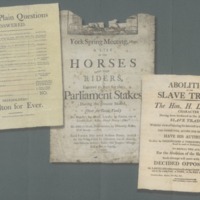
Harewood 1807
2007 saw a number of different projects taking place at Harewood House in West Yorkshire, home of the Lascelles family. The bicentenary was used as an opportunity to explore the family connections with the transatlantic slave trade and the sugar plantations of the West Indies.
As part of a newly developed Learning Programme, leaflets were produced setting out the family connections to Barbados. 2007 also marked the bicentenary of the Yorkshire election in 1807 contested by William Wilberforce, Henry Lascelles (later 2nd Earl of Harewood) and Lord Milton. Competition between the candidates was fierce, based on issues such as Catholic Emancipation, poverty, workers' rights and abolition of the slave trade.
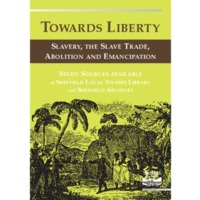
Towards Liberty: Slavery, the Slave Trade, Abolition and Emancipation
This booklet was produced to mark the bicentenary in 2007 and to highlight the material available in Sheffield Local Studies Library and Sheffield Archives for the study of slavery, the slave trade, abolition movements and emancipation. It looks, in particular, at the role of the city of Sheffield and the surrounding areas, and its local residents. Sheffield benefited from the slave system in that goods manufactured in the city's factories were used on the plantations in the West Indies and America. Sugar and coffee produced on the plantations was consumed by residents. There were active anti-slavery groups in Sheffield, including the Ladies Anti-Slavery Society, and petitioning and boycotts were common. Hannah Kilham, a Sheffield Quaker, published a memoir of her experiences in West Africa as a teacher in the 1820s and 1830s.
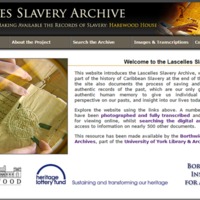
Lascelles Slavery Archive
The Lascelles Slavery Archive was a collaborative project between the Borthwick Institute for Archives and Harewood House Trust to conserve, preserve and make available records relating to slavery from the archives of the Lascelles family of Harewood House, Yorkshire. The project deals with a new discovery of papers relating to the family's fortune based on its estates in the West Indies. Key documents providing evidence for the acquisition of the family's wealth, once thought lost, were found in poor condition during an inventory of Harewood House. The Lascelles Slavery Archive is available through the Borthwick's searchrooms as an online resource, and represents an important section of the larger archive of the Lascelles family held by West Yorkshire Archive Service.
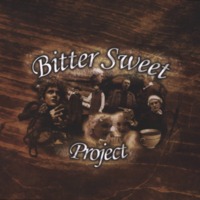
Bitter Sweet Project
Campaign! Make an Impact was a British Library developed programme that used history to inspire young people into active citizenship. The Bitter Sweet Project involved students from Easingwold School engaging with collections from the British Library, Hull Museums Service and Harewood House. Year 9 students studied the 1807 campaign to abolish the transatlantic slave trade and then created a graphic novel about Harewood House’s links to the sugar trade.
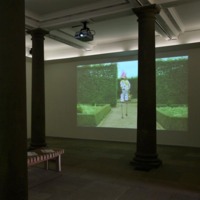
Crop Over
2007 saw a number of different projects taking place at Harewood House in West Yorkshire, home of the Lascelles family. The bicentenary was used as an opportunity to explore the family connections with the transatlantic slave trade and the sugar plantations of the West Indies.
The art installation Crop Over by British Afro-Caribbean artist Sonia Boyce was shown in the public galleries at Harewood House throughout 2007. Crop Over is a Barbadian festival which has evolved from a celebration by plantation slaves of the end of the sugar crop. Sonia Boyce's two-screen film visually depicts the traditions, histories and cultural practices of this festival, which culminates with a carnivalesque parade known as Kadooment. It also responds to the history of Harewood House. The Lascelles family association with Barbados began in the 17th century when Edward Lascelles and his son Daniel were based in Bridgetown, Barbados.
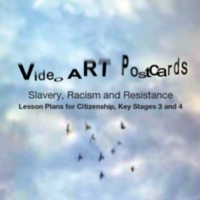
Video ART Postcards
To mark the bicentenary, Manifesta (a not for profit company delivering projects addressing cultural diversity) and the Runnymede Trust (an independent policy research organisation focusing on equality and justice) joined forces to launch a youth and digital media initiative, Video ART (Anti-Racist Trails) Postcards. The project explored connections between slavery, colonialism and contemporary issues of racism and related injustice. In the summer of 2007, two groups of teenagers aged 14-19 from the London Borough of Newham participated in workshops to uncover sites related to historical racism and anti-racism in the West India Docks area of London, assisted by video artists and historians. Using video for self-expression, each participant interpreted this history and heritage by producing a short personal video or 'postcard' - there were 33 videos in total. The videos were made available on an online resource, and a Teacher's Guide was created to be used alongside the website.
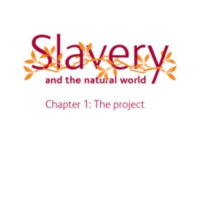
Slavery and the Natural World
In consultation with local community groups, in 2007 the Natural History Museum commissioned new research into its collections that link slavery and the natural world. The research uncovered experiences of enslaved people and the use of plants in their everyday life, as food, medicines and poisons. It also examined the complex relationships between enslaved people and naturalists exploring newly-colonised lands. The museum ran a series of public events, co-hosted by Race on the Agenda, which aimed to bring the historical, scientific and public viewpoints together. It created online educational resources on themes such as Commercial Plants, Everyday Life, Diet and Nutrition, and Resistance. The museum also developed cross-curricular ideas for school lessons in Science using the context of slavery, looking at foods across different cultures, for example.
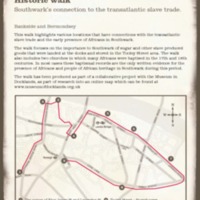
Southwark and Abolition
Southwark Council created two online resources to commemorate the bicentenary. A historic walk, produced in collaboration with the Museum of London Docklands, highlighted locations connected with the slave trade and the early presence of Africans in Southwark. A timeline detailed key dates and events that led to the transatlantic slave trade, including Southwark's local connections to the trade and its abolition. The Cuming Museum in Southwark also held an exhibition, 'Lost and Found'.
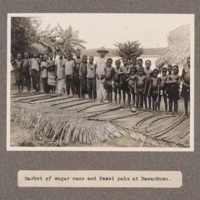
Market of sugar cane and Nsesi palm at Basankusu
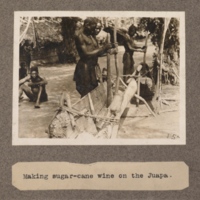
Making sugar-cane wine on the Juapa
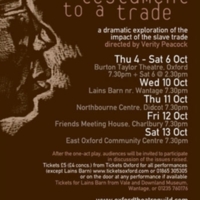
Testament to a Trade
Testament to a Trade was a play produced to mark the bicentenary, with close reference to Oxfordshire. Written by three local writers, the play was produced by Oxford Theatre Guild in collaboration with Oxfordshire Record Office and the Oxford Playhouse. Testament to a Trade weaves accounts of past and present slavery, and is situated in historical and contemporary contexts, notably 18th century Africa and Oxford, and contemporary Eastern Europe and Oxford. A number of archive materials relating to slavery and abolition are held by Oxfordshire Record Office, information on which inspired elements of the story. A teachers pack was produced to inform similar projects. The play opened at Burton Taylor Theatre in Oxford, and toured venues across Oxfordshire.